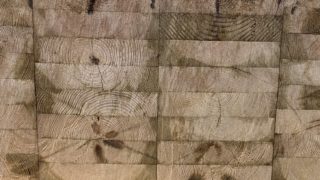Using data to keep concrete structures safe, sustainable, and financially viable – Concrete is the most used construction material in the world, especially within critical infrastructure. Also, it is responsible for 8% of the worlds carbon emissions. Ageing concrete structures, increasing maintenance backlog, inferior concrete, and lack of accurate insight into asset health, all means that concrete structures today pose serious safety, environmental and financial risks. Elop believes the key to solving these challenges lies in the hands of collecting and utilising vital data to keep concrete structures safe, sustainable, and financially viable.
An industry with great digitalisation opportunities
According to the McKinsey Global Institute Digitization Index, the construction industry is among the least digitised sectors in the world. In the United States, construction comes second to last, and in Europe it is in last position on the index.
Elop is about to launch the world’s first rolling, ultrasonic scanning solution for concrete inspection, enabling smart and efficient scanning for a large variety of concrete structures. With real time, 3D imaging, revealing the internal state of concrete structures, giving you immediate and actionable insight.
The solution we have developed at Elop will help digitalise the construction industry in many ways, says Benedicte Taugbøl, Director of Digital Solutions at Elop.
By coupling our unique data insight with intelligent and scalable cloud-based systems, asset owners will get full digital control over their structures. This gives them the ability to monitor infrastructure health, conduct predictive and preventative maintenance, and it provides them with a foundation for taking action to preserve the structures and optimise its lifetime cost, Taugbøl continues.
The ultrasonic signals are being processed through our algorithm, then being visualised as a live 3D representation of the actual structure, showing elements and defects like cracks, air pockets, delamination, rebars and tubes. This is then sent to the cloud application on your tablet or computer where the user will have access to all relevant information and documents from the scanner, including all historic data. The information and findings are documented, stored and can be easily shared with all stakeholders involved in the process.
Simplification is difficult
Creating this type of solution requires high competence within ground-breaking technologies.
Developing a software that translates and visualises extremely complicated data into something that is easy to interpret has been one of the greatest challenges in this project, Taugbøl adds. We have a best–in–class team within areas like 3D/augmented reality, visualisation, data science, mathematics and scientific engineering, and they have been vital in solving these challenges. Moving forward, the team’s collective competence and eagerness for innovation will play an important part in accelerating ELOP’s growth and in creating world leading tools and applications that will disrupt the construction industry.
Full speed towards full structural health management
As the launch of the current solution is coming up, the team is already at full speed developing the next steps towards a full Structural Health Monitoring system. – By combining data from the scanner with other relevant information we can see how concrete structures develops over time. Extracting, contextualising and connecting industry data from different systems and sources will make it possible to create new insights, and also adding artificial intelligence to optimise operations, Taugbøl says.
Curious? learn more about Elop Insight.




